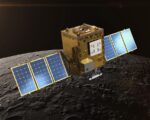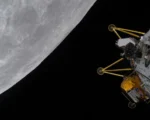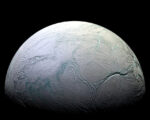A mysterious dark spot on Saturn’s icy moon Enceladus has baffled scientists, prompting questions about the moon’s geological processes. First spotted in images from NASA’s Cassini spacecraft in 2009, the dark feature, approximately a kilometer in size, appeared to fade significantly by 2012. The discovery was a key topic of discussion at the 2024 American Geophysical Union (AGU) meeting in Washington, D.C., where researchers highlighted the unusual and transient nature of the phenomenon.
Cynthia B. Phillips, a planetary geologist at NASA’s Jet Propulsion Laboratory, provided insights into the discovery, crediting her team member Leah Sacks for identifying the anomaly. Sacks uncovered the dark spot while analyzing data from NASA’s Voyager and Cassini missions, comparing images of the same region over several years. This long-term analysis confirmed the gradual disappearance of the enigmatic feature, adding a layer of intrigue to its already puzzling presence.
Researchers have been working to uncover the origin of this dark spot and have ruled out several initial hypotheses. They determined it was not a shadow or an imaging artefact, as it appeared consistently in photographs taken under various lighting conditions. Further analysis of ultraviolet and visible-light data revealed that the spot had a unique reddish-brown hue, contrasting with the bluish tones often observed in darker regions of Enceladus’s icy surface.
The fading dark spot has raised new questions about the dynamic processes shaping Enceladus’s surface. Whether linked to cryovolcanic activity, shifting subsurface materials, or some other yet-unknown phenomenon, the feature underscores the moon’s status as one of the most geologically active bodies in the solar system. Continuing analysis of Cassini’s data, alongside future missions, may one day shed light on this peculiar and transient feature of Enceladus.


















